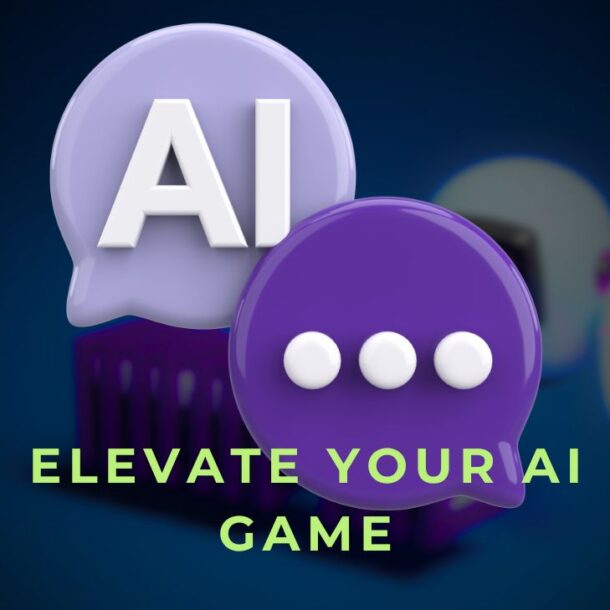Do you know how sometimes you’re trying to explain something to a friend, but you’re not quite sure how to get your point across? Well, working with AI is a bit like that. It’s all about figuring out what you want (that’s your goal) and then finding the right words to ask for it (that’s your prompt).
Think of it as a conversation with a really smart but sometimes literal-minded buddy. You wouldn’t just blurt out a random question to your friend without any background, right? The same goes for AI. That’s where this nifty little framework comes in handy. It’s like a recipe for great AI chats, and it goes by the acronym TCREI.
Let’s break it down in plain English:
T is for Task: What do you want to get done?
C is for Context: What’s the backstory or situation?
R is for References: Do you have any examples or sources to share?
E is for Evaluate: How’d it go? Good? Not quite there?
I is for Iterate: Time to tweak and try again!
It’s not rocket science, but it sure makes talking to AI a whole lot easier. Give it a whirl – you might be surprised at how much smoother your AI conversations become!
Hey there! Let’s discuss the secret to creating awesome prompts for AI tools. It all starts with one simple thing: telling the AI exactly what you want it to do. Think of it like giving instructions to a helpful friend.

Imagine you’re asking your buddy for a favor. You wouldn’t just say “Do something,” right? You’d be specific, like “Hey, can you make a list of our favorite movies?” or “Could you help me write a speech for my sister’s wedding?” It’s the same deal with AI – you’ve gotta be clear about what you’re after.
Now, here’s a pro tip: don’t be shy about adding details. Want the AI to pretend it’s a rocket scientist? Go for it! Need the response in a fancy table format? Just say so! The more specific you are, the better the results you’ll get.
For example, you could say something like: “Pretend you’re a food critic and write a review of an imaginary restaurant in bullet points.” See how that gives the AI a clear role to play and a specific way to present the information.
Remember, the clearer you are with your AI buddy, the more likely you are to get exactly what you’re looking for. So don’t hold back – spell out your task, throw in some details, and watch the magic happen!
You’re a movie critic that specializes in Italian film. Create a table that contains the greatest Italian films of the 1970s, and separate them into genres like thrillers, dramas, and comedies. Provide a 100-word summary of each movie as well as details about the production including director and release year.
When crafting prompts for AI, it’s beneficial to be generous with information. The more relevant details you provide, the higher the quality of the output you’ll receive. Think of it as painting a complete picture for the AI to work with. By sharing your objectives, the reasoning behind your request, or previous approaches you’ve tried, you’re giving the AI a comprehensive understanding of your needs.
This additional information is what we call context, and it’s a crucial element in creating effective prompts. Instead of asking a basic question like “How was DNA discovered?”, consider framing your prompt with rich background details. For instance, you might explain that you’re a science educator developing a new curriculum for college students. You could specify that you need an engaging explanation of DNA’s discovery and its global impact, written in layman’s terms. You might even mention that previous students found the course challenging to grasp, so you’re aiming for a captivating introduction to hook their interest.
By providing this level of detail, you’re not just asking a question – you’re setting the stage for a tailored, comprehensive response that aligns perfectly with your specific needs and circumstances.
Think of references as concrete examples or resources that illustrate what you’re aiming for with your AI-generated content. It’s similar to showing a hairstylist a photo of the haircut you want, rather than just describing it verbally.
Depending on the AI tool you’re using, you can incorporate various types of references – text, images, or even audio – to refine your request. These references could be your work or external examples. The key is to clearly explain how these references relate to your overall goal, helping the AI understand exactly what aspects to emulate. You don’t need to go overboard with references; typically, two to five well-chosen examples are sufficient.

For instance, instead of simply asking for a generic product description, you could provide a more detailed prompt. Include specific product features, reference existing descriptions from your website, and specify the desired format and tone. This approach gives the AI a clear blueprint to work from, resulting in a more tailored and relevant output.
Remember, the goal is to guide the AI towards producing content that closely aligns with your vision and needs. By providing thoughtful references, you’re essentially giving the AI a roadmap to follow, increasing the likelihood of getting the results you’re after.
Happy Prompting
